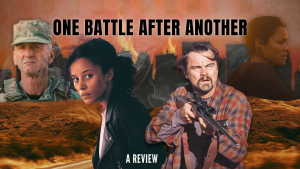Bleeding for humanity
November 11, 2009
Four years ago I was put in the hospital because of a major head wound after being run down by a dirt bike. There was a deep gash in my forehead from being struck by the bike’s handlebars and I was bleeding profusely.
A short while after I was taken by the ambulance, I fainted, and only woke up eight hours later to find myself on a hospital bed. Someone who donated blood helped me regain my grip on life.
There were more than 1,000 Sacramento State students who donated blood to save lives at the annual donor drive Oct. 19 and 20. The drive is an another way that Sacramento State is competing against UC Davis in the annual Causeway Classic.
The university that collects the most blood will receive a trophy at the game from BloodSource.
BloodSource, a local nonprofit organization, collects blood and distributes it to the community.
Dawn Deason, spokeswoman for BloodSource, urged people to donate.
“Just do it when you can. After the first time you do it, you won’t even give it a second thought,” Deason said.
According to the BloodSource website, each blood donation can be used to treat up to three different patients.
However, there are some restrictions on who can donate. Deason said if you are ill, recently got a tattoo, or are HIV-positive, you might not be able to donate. Deason also said this should not prevent students from going through the screening process at a blood drive.
“I would recommend no one say to themselves, ‘Oh I have such and such therefore I can’t donate.’ I think the best way to find out if you’re eligible is to go and ask,” Deason said.
The screening process consists of a mini-physical and filling out a survey about personal medical history. During the mini-physical, a nurse will take your blood pressure, measure your temperature, and do a finger stick to determine your blood sugar level.
Some students may be put off by the needles or the fact that fainting may happen during the donation process. By donating, you will have a positive impact on someone’s life.
“Everybody associates that getting a needle prick for blood donation is the same as getting a shot, and it’s not the same at all. You just sit there, squeeze a ball, and fill up the bag and then it’s over,” Deason said.
Deason said getting a needle prick is much less painful than receiving a tattoo or a piercing, and it is incomparable to a hospital patient’s suffering.
“You’ll walk away feeling like you’ve done something really good that day,” Deason said.
And even though the two-day donor drive has ended at Sac State, it is still possible to donate blood at a local BloodSource center. To make sure your blood donation counts toward this year’s Causeway Classic competition, you need to donate by Nov. 18.
Think about how you would feel if you were in a hospital and in desperate need of blood. I am sure you would appreciate whoever had donated their blood to give you life.
In fact, writing this column has made me realize what I have been missing out by not donating blood – making a positive, life-saving impact.






















































































































